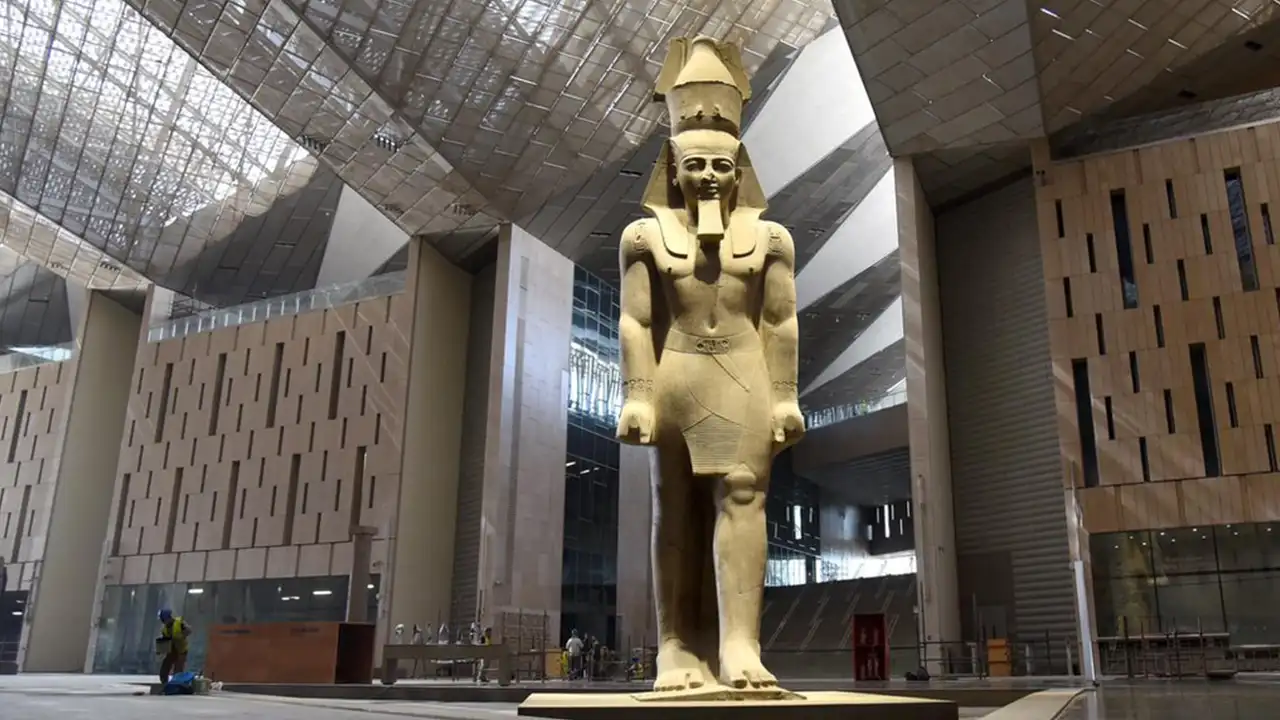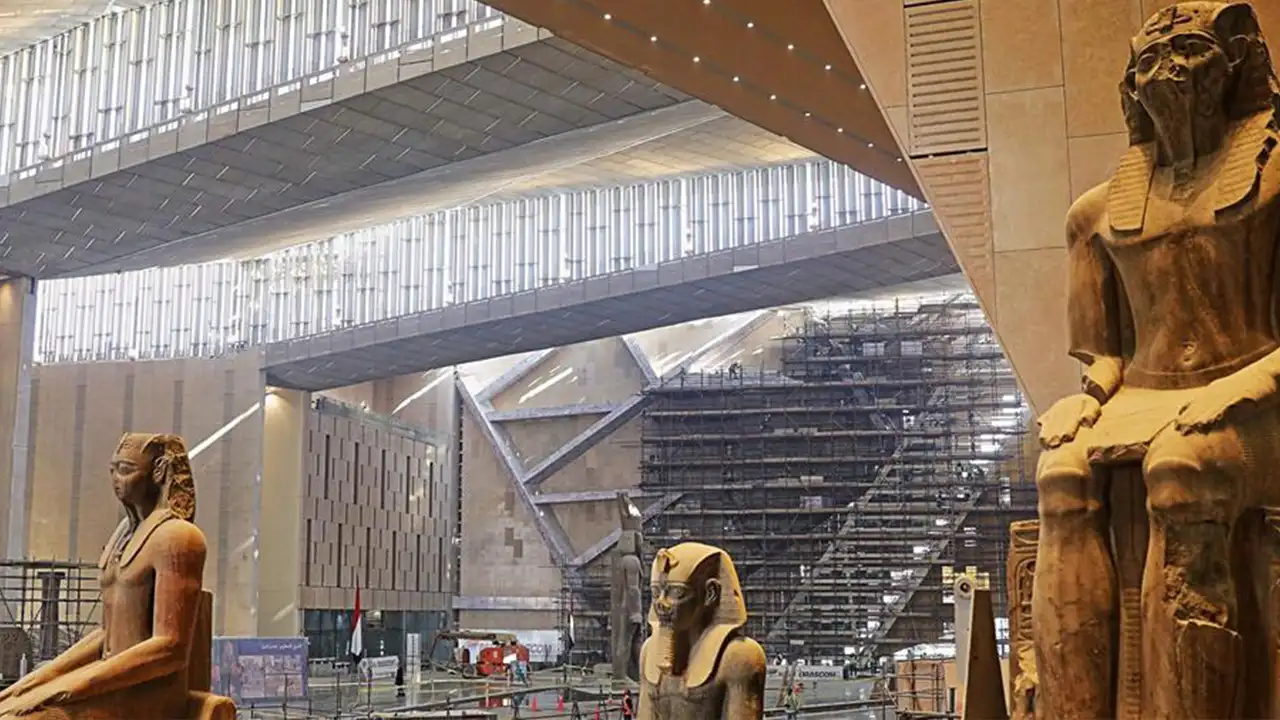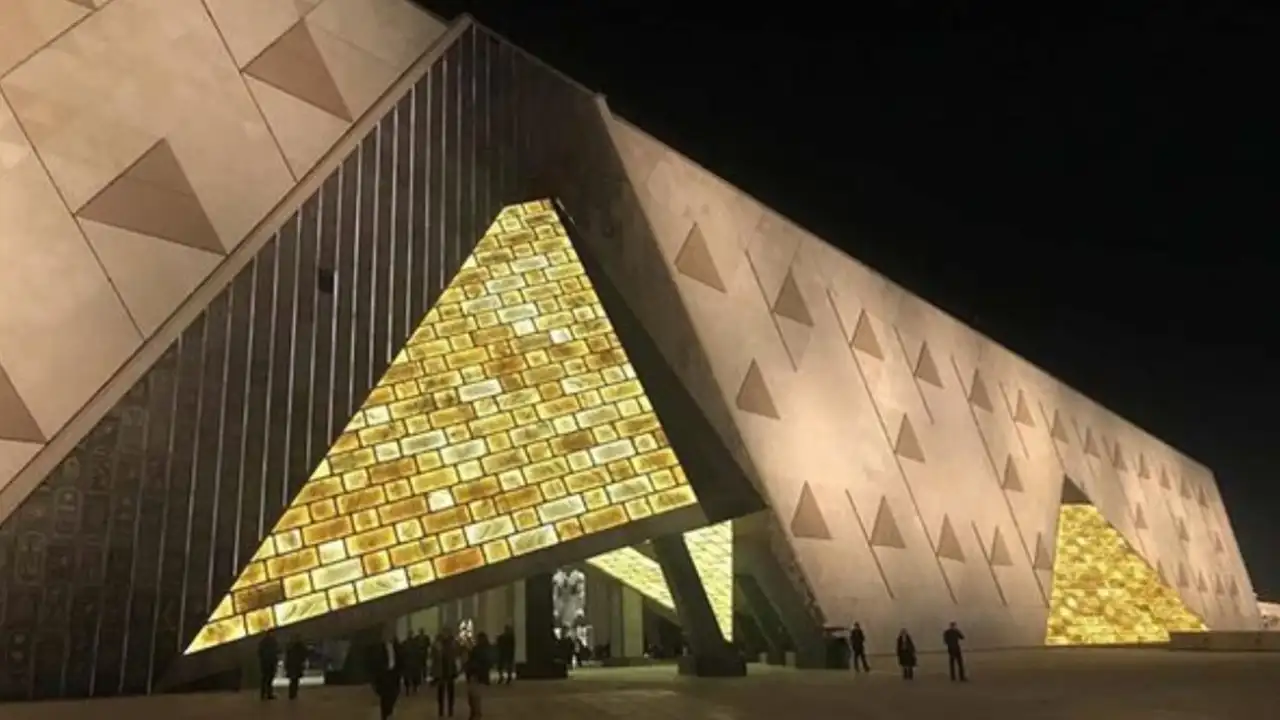The Grand Egyptian Museum: An Ancient Civilisation Through the Ages
Egypt -
The ancient Egyptian civilisation, undeniably rich and powerful, transcends time to showcase its strength and legacy through its valuable and historical artefacts.
If you are searching for a historical and heritage destination that takes you back to the era of the ancient Egyptians, this article will provide essential information about the establishment and formation of the Grand Egyptian Museum.
1: Establishment:

The Grand Egyptian Museum is a crucial means of preserving ancient historical and archaeological artefacts from damage or loss.
To document and safeguard this historical encyclopaedia, the idea of its establishment was conceived as a positive and beneficial step.
The foundation stone for the Grand Egyptian Museum project was laid in the 1990s, specifically in 2002, and it is located 2 kilometres from the immortal Giza pyramids.
The design of the museum was fortunate from the start; the current design by the architectural firm Heneghan Peng Architects from Ireland won the competition.
The design concept revolves around representing the sun’s rays extending from the three pyramid peaks, converging at a conical mass, which is the Grand Egyptian Museum.
The museum spans over 300,000 square metres, making it a significant tourist destination and a mirror of both ancient and modern civilisation.
2: Components of the Grand Egyptian Museum:

This grand structure consists of several buildings and multiple halls, taking you on a journey through its elegant design and architectural brilliance:
- Hall of King Tutankhamun: Covering 7.5 thousand square metres, it houses 5 thousand pieces of the king’s treasures, gathered for the first time.
- Children’s Museum: Spanning 5 thousand square metres, it includes multimedia and models to explain ancient archaeological content.
- Main Library:Covering 1.1 thousand square metres.
- Temple Garden Restaurant.
- Main Entrance:Spanning 7 thousand square metres, it features the statue of King Ramses and five other massive artefacts.
- The Grand Staircase: Covering 6 thousand square metres, it contains 87 significant artefacts.
Other essential sections have been developed and built by the state to preserve the museum's priceless artefacts.
3: Purpose of Establishment:

The Grand Egyptian Museum serves multiple purposes, including:
1-Educating the next generation about the importance of Egyptian civilisation and how to preserve their heritage and history.
2: hosting Egyptian and international seminars and conferences as historical events are documented and followed up within the museum.
3: digitally documenting historical artefacts and recording archaeological pieces, including preserving, securing, studying, and restoring them.
4-Reviving traditional Egyptian crafts and arts by producing and marketing replicas of ancient artefacts both inside and outside the museum.
5: Utilising the latest technologies for an outstanding museum display to attract visitors and promote tourism.
6-Showcasing the most ancient and valuable statues and artefacts.
4. An Enjoyable Tour Inside the Grand Egyptian Museum:

Immerse yourself in the heritage-filled atmosphere of the museum, feeling proud as you explore it and learn about its artefacts.
The museum is a suitable tourist destination for all age groups, aiding in understanding the cultural nature of the ancient Egyptians and teaching Egyptian history to both children and adults.
The museum houses the treasures of King Tutankhamun, totaling 5,000 items from the museum's collections, along with the statue of King Ramses II, the collection of Queen Hetepheres, and the solar boats of King Khufu.
Capture memorable photos, attend cultural events, and enjoy a delightful visit while promoting Egyptian tourism with its magnificent heritage.





